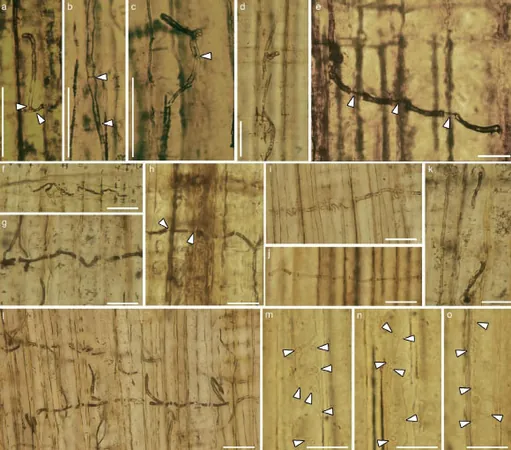
Unveiling the Glory of Comet Tsuchinshan-ATLAS: A Spectacle Worth Remembering
2025-05-05
Author: Yu
The Year of the Comet
Comets are the cosmic wild cards of our solar system, often appearing unexpectedly and dazzling skywatchers with their brilliance. Among these icy travelers, Comet Tsuchinshan-ATLAS stands out as a notable exception, having burst onto the scene with a year and a half of anticipation before captivating observers worldwide with its magnificent display.
A Brilliant Discovery
Officially known as C/2023 A3, this comet was first spotted on January 9, 2023, by a telescope at the Purple Mountain Observatory in Nanjing, China. Its recognition was solidified a month and a half later when it was independently detected by the Asteroid Terrestrial-impact Last Alert System (ATLAS) in South Africa. At that time, the comet was approximately 670 million miles (1.1 billion kilometers) from the Sun, nestled between the orbits of Jupiter and Saturn.
The Hype Machine Begins
While Tsuchinshan-ATLAS wouldn’t reach its closest point to the Sun, known as perihelion, until September 27, 2024, the excitement had already begun. Initially, it seemed that skywatchers in the Southern Hemisphere would have the best views, as the comet became visible in the southern predawn sky. However, it soon experienced conjunction with the Sun, disappearing from view.
A Celestial Comeback
Just when it seemed the comet's glory was fading, Tsuchinshan-ATLAS made a stunning reappearance as an easy naked-eye evening object around October 12, coinciding with its closest approach to Earth. At its brightest, the comet shone with a magnitude of −4.9, a brilliance not seen in the Northern Hemisphere since the legendary Hale-Bopp comet graced our skies in 1997. With its impressive tail extending up to 15° and a stark anti-tail captured in photographs, Tsuchinshan-ATLAS truly left an indelible mark.
Savoring the Memories
With the uncertainty of when such a bright comet will next grace our skies, enthusiasts are left to cherish the stunning images and memories of this celestial marvel.
The Origin of Its Name
The name Comet Tsuchinshan-ATLAS reflects the unified efforts of the two observatories that discovered it. Tsuchinshan is derived from an older transliteration of Zijinshan, meaning 'purple mountain,' honoring the historic Purple Mountain Observatory—China’s first modern astronomical station founded in 1934. Located in Nanjing, the observatory’s original site has primarily shifted to more remote satellite stations for advanced research.
On the other hand, ATLAS is an impressive network of telescopes operated by the University of Hawai’i and funded by NASA, dedicated to scanning the sky for potential Earth-threatening asteroids. Its South African telescope independently identified Comet C/2023 A3 on February 22, 2023, confirming its earlier detection by Purple Mountain Observatory.
A Comet for the Ages
With its stunning visuals and remarkable journey, Comet Tsuchinshan-ATLAS has certainly earned its place in the annals of astronomical history. As we look to the future, there is no telling when we’ll next witness such an awe-inspiring cosmic event.




 Brasil (PT)
Brasil (PT)
 Canada (EN)
Canada (EN)
 Chile (ES)
Chile (ES)
 Česko (CS)
Česko (CS)
 대한민국 (KO)
대한민국 (KO)
 España (ES)
España (ES)
 France (FR)
France (FR)
 Hong Kong (EN)
Hong Kong (EN)
 Italia (IT)
Italia (IT)
 日本 (JA)
日本 (JA)
 Magyarország (HU)
Magyarország (HU)
 Norge (NO)
Norge (NO)
 Polska (PL)
Polska (PL)
 Schweiz (DE)
Schweiz (DE)
 Singapore (EN)
Singapore (EN)
 Sverige (SV)
Sverige (SV)
 Suomi (FI)
Suomi (FI)
 Türkiye (TR)
Türkiye (TR)
 الإمارات العربية المتحدة (AR)
الإمارات العربية المتحدة (AR)